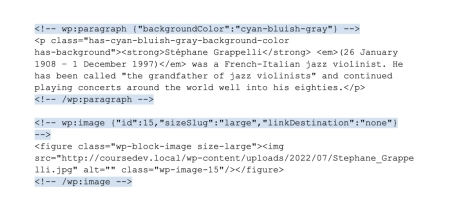本文我们分享三款最常用的js插件,使用这三种插件的任意一个都可以方便的在wordpress中实现ajax请求。
服务器端代码
首先在主题文件夹根目录的functions.php文件中创建函数和两个钩子。函数的名字将被用于客户端的网络请求,因为在wordpress中所有的ajax请求都是向同一个网址发出的,因此函数的名字是WordPress如何识别哪个函数需要被执行的唯一方式。
WordPress给出了两个钩子,其后缀是我们选择的自定义函数名称。为了简单起见,我们把它叫做 “get_recent_posts_ajax”。一个钩子是为登录的用户准备的,另一个是为访客用户准备的。这里我们只是返回一个JSON响应,但你可以在这里做任何复杂的计算或用cURL做另一个网络请求。
function get_recent_posts_ajax(){
if( !wp_verify_nonce($_POST['nounce'],'get_recent_posts_ajax') ){
echo json_encode(array( 'status' => false, 'message' => 'Nounce error' ));
exit(0);
}
$data = array();
$posts = wp_get_recent_posts(array(
'posts_per_page' => $_POST['number_of_posts'],
'post_status' => 'publish',
));
foreach ($posts as $key => $value) {
$data[] = array(
'ID' => $value['ID'],
'post_date' => $value['post_date'],
'post_title' => $value['post_title'],
'post_excerpt' => $value['post_excerpt'],
'comment_count' => $value['comment_count'],
'permalink' => get_permalink($value['ID']),
);
}
echo json_encode($data);
exit(0);
}
// 已登录用户
add_action('wp_ajax_get_recent_posts_ajax', 'get_recent_posts_ajax');
// 未登录用户
add_action('wp_ajax_no_priv_get_recent_posts_ajax', 'get_recent_posts_ajax');客户端代码
HTML
<form id="form" action="<?php echo admin_url('admin-ajax.php'); ?>">
<input type="number" min="1" name="number_of_posts" value="" required />
<input type="hidden" name="nounce" value="<?php echo wp_create_nonce('get_recent_posts_ajax'); ?>" />
<input type="hidden" name="action" value="get_recent_posts_ajax" />
<input type="hidden" name="url" value="https://www.02405.com" />
<button type="submit">Submit</button>
</form>JAVASCRIPT
Option 1: Vanilla JS
var form = document.getElementById('form');
form.addEventListener('submit', function(e){
e.preventDefault();
var formData = new FormData(form);
formData.append('extra_key', 'extra_value');
var xhr = new XMLHttpRequest();
xhr.open('POST', form.getAttribute('action'), true);
xhr.onreadystatechange = function (res) {
if (this.readyState == 4 && this.status == 200) {
var res = JSON.parse(xhr.responseText);
console.log(res);
}
if (this.readyState == 4 && this.status == 404){
console.log('An error occurred')
}
}
xhr.send(formData);
}, false);
Option 2: Axios
var form = document.getElementById('form');
form.addEventListener('submit', function(e){
e.preventDefault();
var formData = new FormData(form);
formData.append('extra_key', 'extra_value');
var xhr = new XMLHttpRequest();
axios.post(form.getAttribute('action'),
formData
).then(function (res) {
console.log(res.data);
}).catch(function (err) {
console.log(err);
}).then(function () {
// always executed
});
}, false);Option 3: jQuery
jQuery(function ($) {
$('#form').on('submit', function(e){
e.preventDefault(); // prevent page refresh on submit
var formData = new FormData($('#form')[0]); // pass HTML form element as argument
formData.append('extra_key', 'extra_value');
$.ajax({
method: 'POST',
data: $('#form').serialize(), // you can also use jQuery serialize
// data: formData,
// processData: false, // add this if using "new FormData"
// contentType: false, // add this if using "new FormData"
url: $('#form').attr('action'),
}).done(function(res) {
var res = $.parseJSON(res)
console.log(res);
}).fail(function(err){
console.log(err);
}).always(function(){
console.log('this will always execute');
});
});
});








